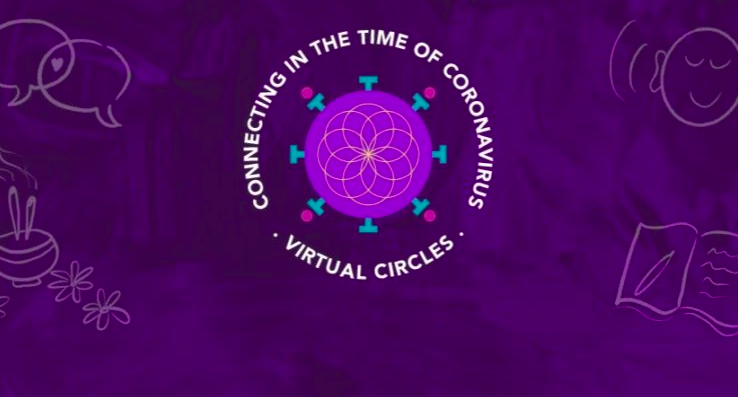This is Part 1 of a two part guest blog series with Anna Sundukova and Felix Burghardt, two user experience (UX) strategists from Berlin and Amsterdam working in the hospitality, coworking and coliving fields.
In the first part of this blog series, we wanted to share how coliving, coworking and hotel spaces around the world are handling the coronavirus crisis. We will give some examples of responses from these companies and suggestions on how to maintain and improve your customer experience and satisfaction during a crisis that strongly encourages social distancing (we prefer the term physical distancing).
We have also compiled a list of responses from coliving operators in regards to their crisis management approaches on Coliving Insights. Also, we have put together a thoughtful blog post about coliving design and architecture in the times of Covid-19. We hope it is useful for you and your community. In this post we have given seven suggestions on how to help maintain and enhance your user experience during this crisis, covering:
The second part of this blog series titled “Are shared living and working spaces here to stay?“ takes a deeper dive into the role of UX designers and explore some best practices for enhancing your user experience as a coliving operator. But first, let’s take a little look into this whole coronavirus thing…
How is the current situation affecting shared spaces?
As Tim Leberecht describes it in his article ‘Four Paradoxes of the Coronavirus’, we are currently going through very paradoxical times. On one hand the physical distancing is bringing people and communities closer together digitally, while on the other hand we have started to see people we meet in public areas and commons spaces as potential threats.
Overall it seems like this crisis could potentially be grounding us in a way and giving us time to be more conscious about what is truly important to us and what we can live without. So as we reflect on the essentials, it is also important to have some foresight on how this can impact our economy, and in this case our community spaces.
Right now and in the near future most shared spaces will have to shut down temporarily or significantly reduce their operations due to the very nature of the disease we are dealing with. We are already seeing countries like Spain close down all hotels and dips in occupancy of up to 90% in coworking spaces in London. Physical distancing is not an option but a civil duty and a shared space is, of course, counter-productive to physical distancing. Unfortunately, this means inevitable damage will be done to the industry. However, the hope remains that through government support or other support measures most spaces will manage to stay in operations until this passes.
In the long-term we might experience nothing short of a rebirth of the concept of community and a new value being put on socialising, spending time among others and connecting as people will become hungry for human connection after weeks in isolation. Now, more than ever, is the time for authentic connection and community: we need to implement a bit of physical distancing (not social distancing) and shared space operators can help facilitate deeper connection through alternative means.
UX solutions to solving crises
To analyse how shared spaces are responding to the crisis, we have compiled a list of responses from coliving operators for a special Coliving Insights edition which you can find here, along with additional news and resources for handling the crisis as a property manager.
We have seen some inspiring responses from across the property sector, such as student accommodation operator Unite cancelling rent payments for students going home to families and Quest Apartment Hotels turning their hotel rooms into quarantine or isolation facilities for families and key workers that require them. Common is also providing housing for displaced college students during the COVID-19 outbreak and Zoku is extending their length of stay in their Amsterdam location. Outpost Club in NYC is even allocating rooms for medical staff.
In addition to some of the responses from the industry above, we wanted to share some of our thoughts on how you can maintain customer satisfaction and staff and resident wellbeing during the coronavirus crisis. Here are 7 suggestions on how to do this:
1. Take care of your employees
Now, in the future and always, a great customer experience starts with your employees. Even if you come up with the best strategies for your customer satisfaction, stressed, frightened and overworked employees will not be able to deliver any of it. All the points mentioned below are crucial when it comes to your employee experience as well.
2. Identify opportunities to deliver true value
UX is about making decisions based on user needs, wishes, pains, desires, habits and behaviours, tailoring each and every product or service specifically to its audience. In search for solutions we always turn to the users first. In order to support your audience in the best possible way, it is crucial to observe the current situation and your customers’ behavior. How is the crisis affecting their lives? What changes can we see in our users’ behaviours, needs and wishes?
Broadly speaking what we see is increased amounts of time spent at home, remote work, physical isolation and possible loneliness, increased awareness around hygiene, and for some also financial insecurity and instability of work. More people are forced to cook at home. How can you support them in overcoming this challenge? Some people may have sleeping problems due to increased emotional investment. How can you support them to have a better sleep?
An improvement of the user experience of any product at this time would be addressing these specific immediate issues, and at the very least not making things worse than they already are. Below are just some of the examples of the thought process you could be applying right now to create a good user experience even in the times of crisis.
3. Enhancing your residential spaces
If you are operating apartments, you can be thinking about the very basic things like simply making the environment “nicer” as people spend increased amounts of time indoors. Introducing helpful services like reduced rate grocery deliveries through partnerships with major chains is an option. Or teaming up with online fitness class providers to ensure you are supporting the health of your residents.
Maybe you could offer the apartments at a discounted rate to those whose lease is running out with no opportunities to sign new ones right now. The Coliving Insights Coronavirus Information Center gives some hands on approaches from coliving operators around the world.
4. Bringing your communities online
If you are operating communities that suddenly cannot meet in person, facilitating online gatherings and promoting the continuation of exchange of knowledge and content online could be an option for you. Coworking spaces and conferences around the world are already starting to do this. For example, Factory Berlin – a coworking community – managed to quickly refocus the community building efforts online through Slack, hang-outs, events and workshops all done remotely. Likewise the tech conference IAM is now hosting all of its sessions online, making attendees pay as little as 35 EUR per ticket.
Value-adding and appropriately priced online events could become an additional revenue stream for your business as well. Additionally, supporting people with tools, initiatives and mindsets that will help keep up the social ties even at a distance will bring a lot of value to most people at the moment. Innovation agency Sharehold has also created this list of ‘social-distance approved’ activities and initiatives in their Community Action resource document.
5. Managing “money issues”
If you have a model based on recurring payments, you could offer a deferral of monthly payments to support those out of work. If a large part of your audience is independent creatives, maybe there is an option for you to use some of your social media and marketing channels to help promote their work, earn money and pay for your services in return. Coliving Hub also recently launched some suggestions for coliving operators and landlords in their Open Letter to Coliving Space Landlords.
6. Support your audience - don’t treat this as business as usual.
In order to build companionship it’s important to support your audience navigating through this crisis. This could go from creating virtual care packages with tips and tricks on how to spend time at home, virtual community events to creating rituals that help them structure their day. The initiatives should emphasize your brand values and pay attention to the needs of your audience. In a nutshell, what matters right now is not so much the UX of your booking form but rather the positive change or support you can bring to the life experiences of the people using your products.
If you show genuine human support to the people who are using your product or service in difficult times, it is going to win you the kind of brand loyalty that no marketing campaign can. The contrary is also true: if you squeeze every last penny out of your clients and just continue with business-as-usual, people are likely to become disillusioned about the integrity of your business and brand and might look elsewhere when the first opportunity arises. If possible, try to ease policy structures, act according to your brand values and show empathy. They will remember this even long after the crisis.
7. Check-in on a personal level
Everyone is communicating about the pandemic right now but it often feels a bit standardized. Despite informing your audience with updates from your side, try to check-in with your guests, tenants or community on a more personal level. Make it a habit to reach out to them and ask how they feel, going beyond the usual ‘I am fine’ responses. Dig a little bit deeper to understand their underlying needs and worries.
It’s OK if you don’t have all the answers to this crisis but you need to show that you care without flooding your customers’ inboxes in a meaningless way.
Now, more than ever, make sure your customer support is working. There is nothing worse than being stuck with a question or a problem in these times of uncertainty and seeing the anonymous “we will get back to you within 14 days”.
You can also suggest wellbeing practices such as breathwork sessions, meditation, yoga and sharing circles. Check out our recent blog post on wellbeing tips for coliving spaces during coronavirus here.
What’s next?
It is somewhere between extremely hard and nearly impossible to predict precisely what will happen after such a major and unprecedented shake up especially because everything points to the fact that we are just at the beginning. However, we can already see some interesting patterns emerging.
Number one on our list is the renaissance of community and the revival of public social spaces. While community has been one of the most widely over- and misused words of the past decade, we think that spending weeks with a severely restricted access to social contact will bring it home to us how important it really is in our lives and how our emotional well-being depends on it. We think people will start flocking to the streets, squares, cafes, restaurants, events and elsewhere where they can enjoy the simplest thing of all – human connection and conversation. Something that maybe was taken for granted will become a true craving. This is an interesting time for those operating some kind of public spaces to look at their “community” spaces, like kitchens, lobbies, coworking cafes, lounges etc and make sure that they are prepared for when the world will emerge from this “winter sleep”.
Second, remote work. After so many have had a taster of what it is like to work remotely, we might see a considerable part of the workforce seeking to implement this set up. This would be an interesting development for many different branches. Coworking spaces might suddenly see an increase in memberships, employers might need to rethink what an office means when half of the company comes in once a week or less, furniture producers might want to look at expanding their home office lines and so on. If the trend really takes off and we will see the return of travel, this might also mean good news for coliving spaces as digital nomadism might experience a new wave.
Third, we will possibly be seeing a shift in perspectives in terms of consumption. While sitting at home you might ask yourself: if there is nobody to show our recent purchases to, do we still need it? It’s a great time to reflect on essentials versus non-essentials and bring awareness to the costs and processes of the products we need most. We might be seeing an even bigger slight shift from consumption of superficial material objects to experiences that have meaning and are literally helping us improve ourselves. Books, online courses, yoga classes etc could all come to the forefront right now as our lifestyles have been pushed upside down.
Overall, as we recover from this crisis we might be seeing a lot of new creative potential emerge through all kinds of new projects, initiatives and startups. While money and budgets could be tight for a while, this mandatory pause may become the fertile ground for people to come up with new ideas, theories and values that we might see coming to fruition a year or two down the line.
We all might need a moment of pause and reflection to fully grasp what is happening right now and what it means to us in our personal and professional lives. In terms of UX it will still be key to make sense of the world of our customers and observe behaviors in order to innovate, differentiate and drive business growth. But we might see a shift away from a solely human-centric approach to a broader, holistic and more conscious model that shows humans as part of the ecosystem and not the center of it.
P.S. We recommend diving deeper into these insightful thought pieces from Yuval Noah Harari, Tim Leberecht and Charles Esenstein to read into what a post-coronavirus planet may look like and how it will impact our collective consciousness.
This article has been coauthored for you by:

Experience designer, product strategist, design thinking consultant and facilitator. Creator of spatial experience ecosystems centred around human needs, wishes and desires. Anna focusess on helping businesses create spaces as experience journeys and not just walls.

Experience designer. His experience spans across multiple continents, cultures and industries. Luxury hospitality, boutique hybrid hotels, coworking, coliving spaces and food & beverage. Felix creates and implements experiences to increase guest satisfaction and sustainable business growth.
Transformational Coach and facilitator. Trainer in mindfulness, sharing circles, and how to live and lead more consciously. Co-author of the Community Facilitation Handbook and the Coliving Apps & Tech Guide. Facilitates community engagement strategies.

